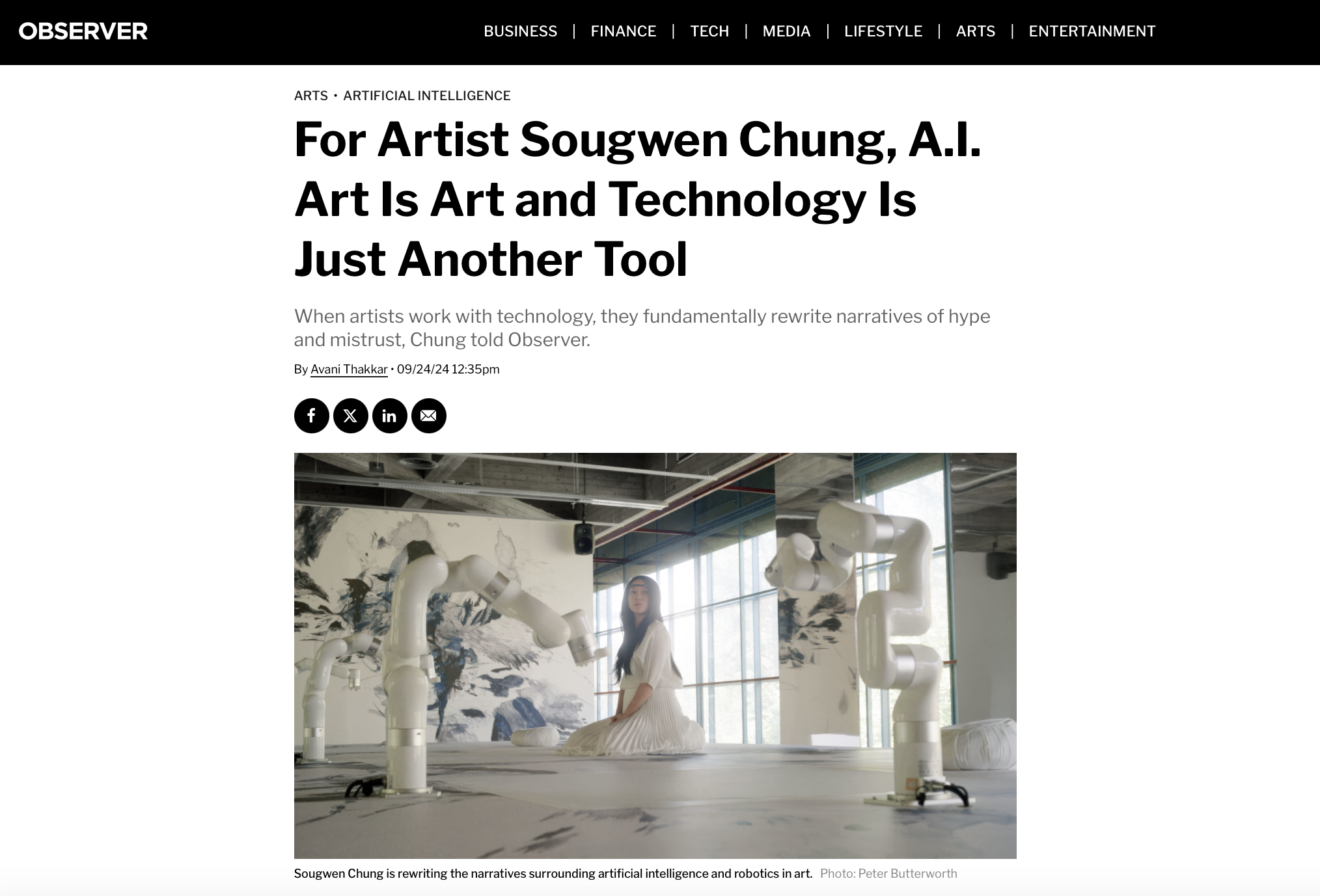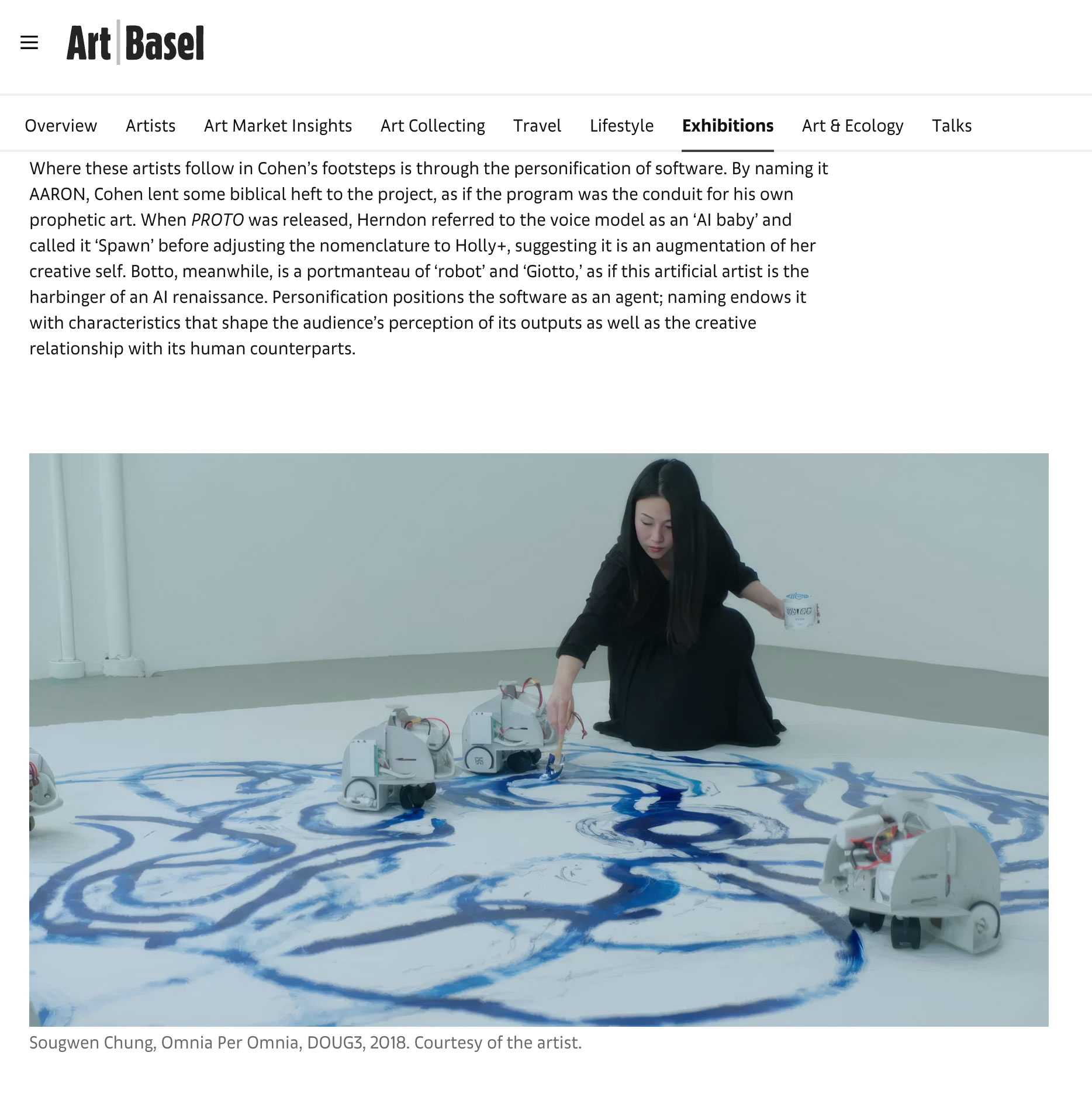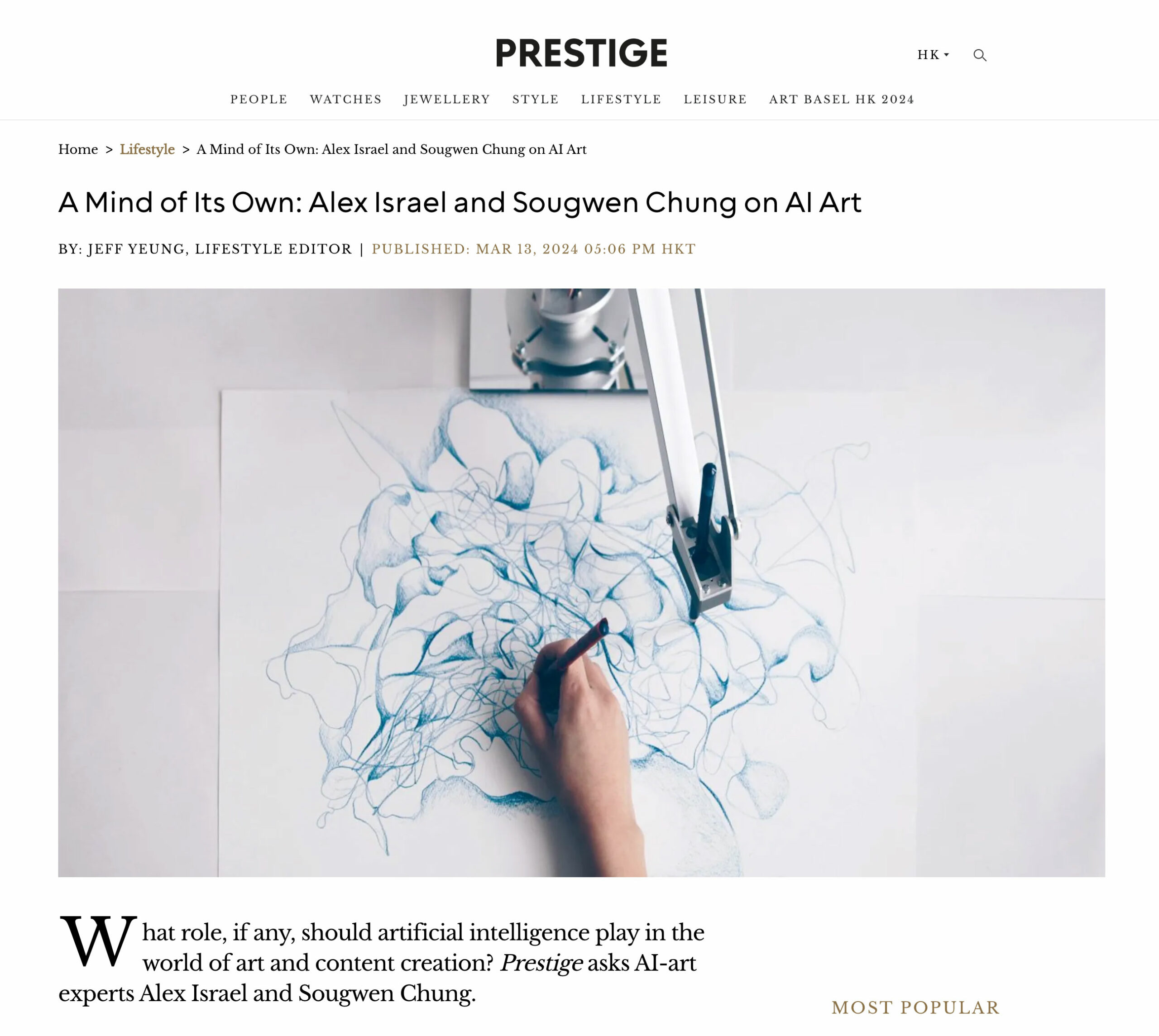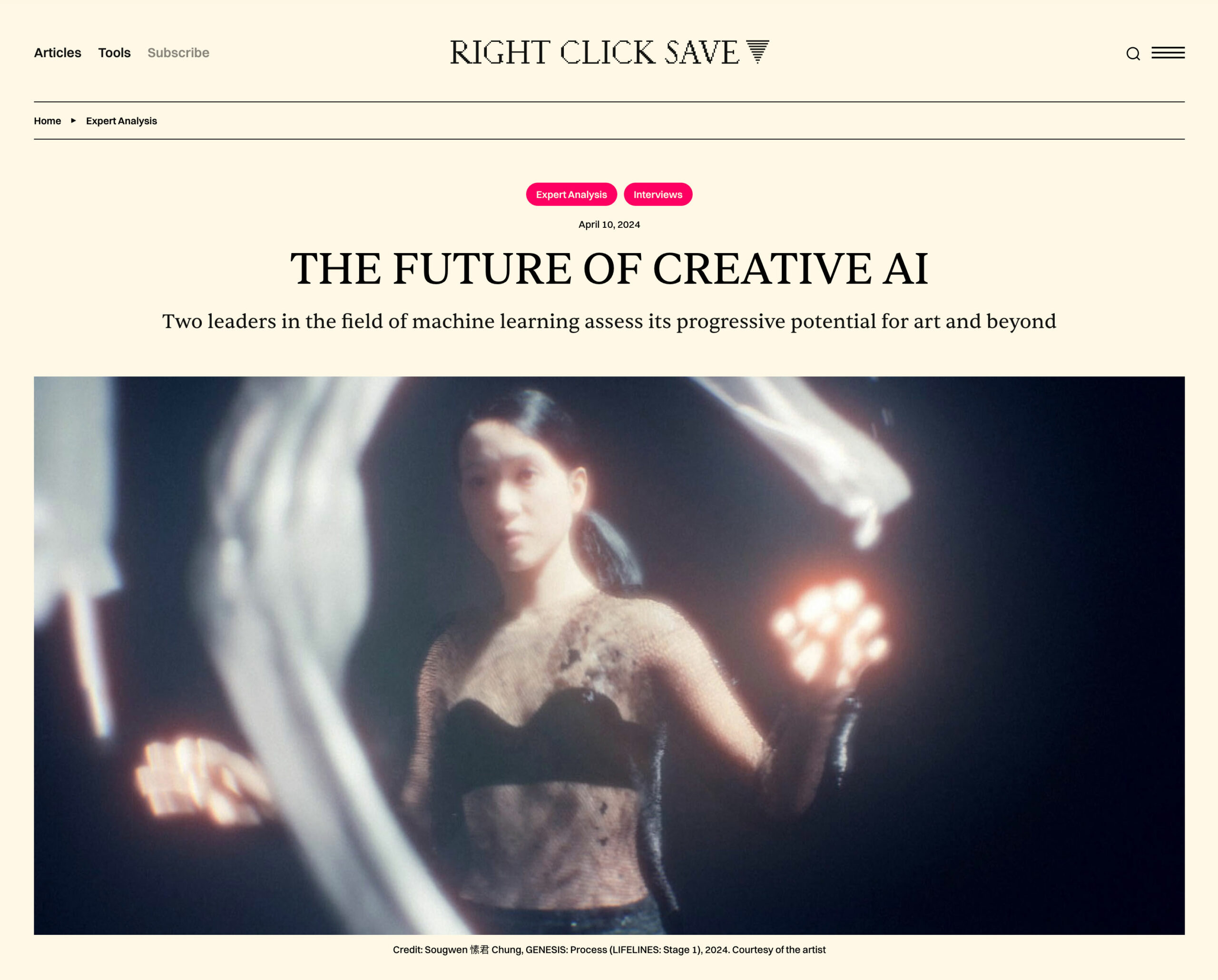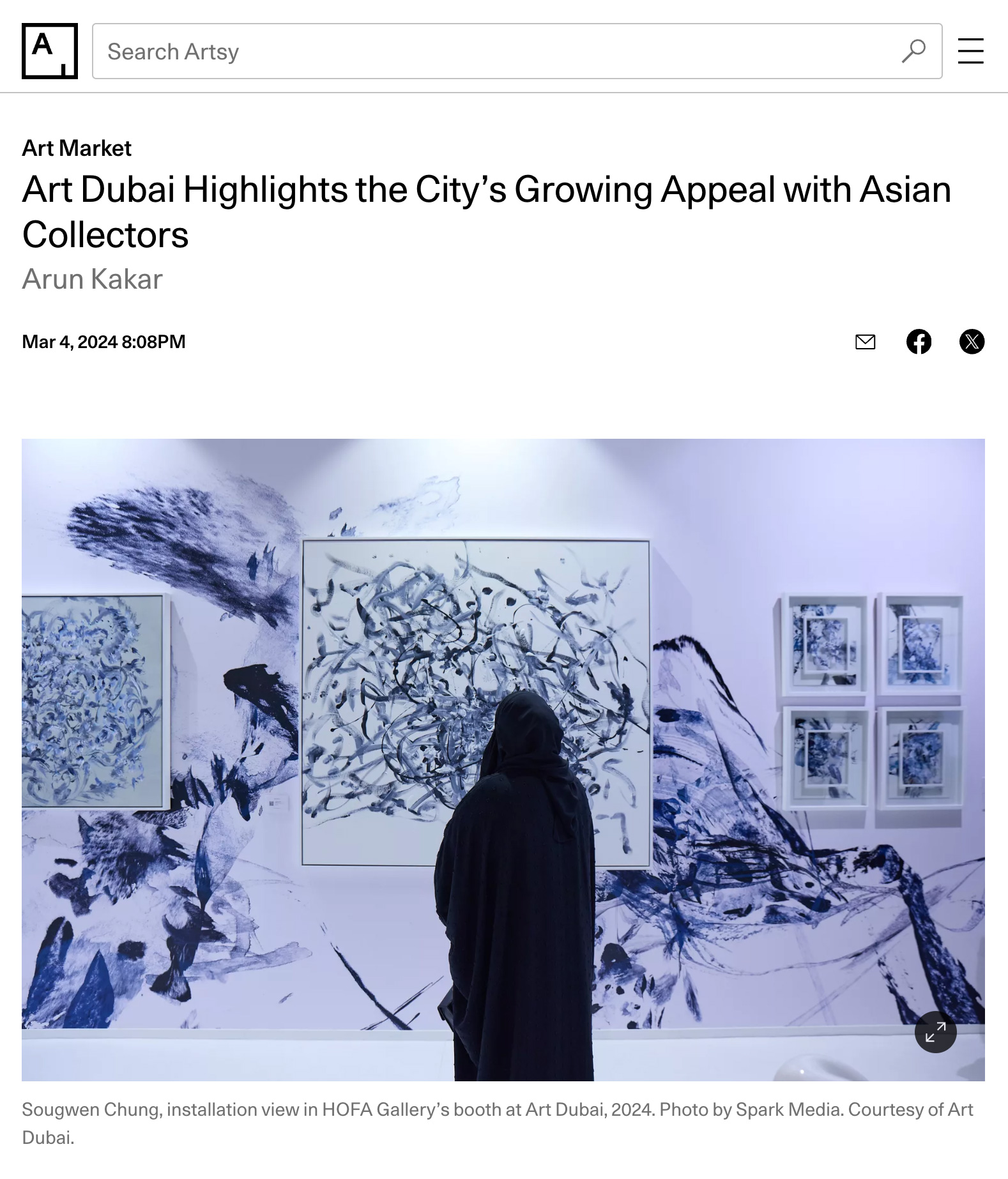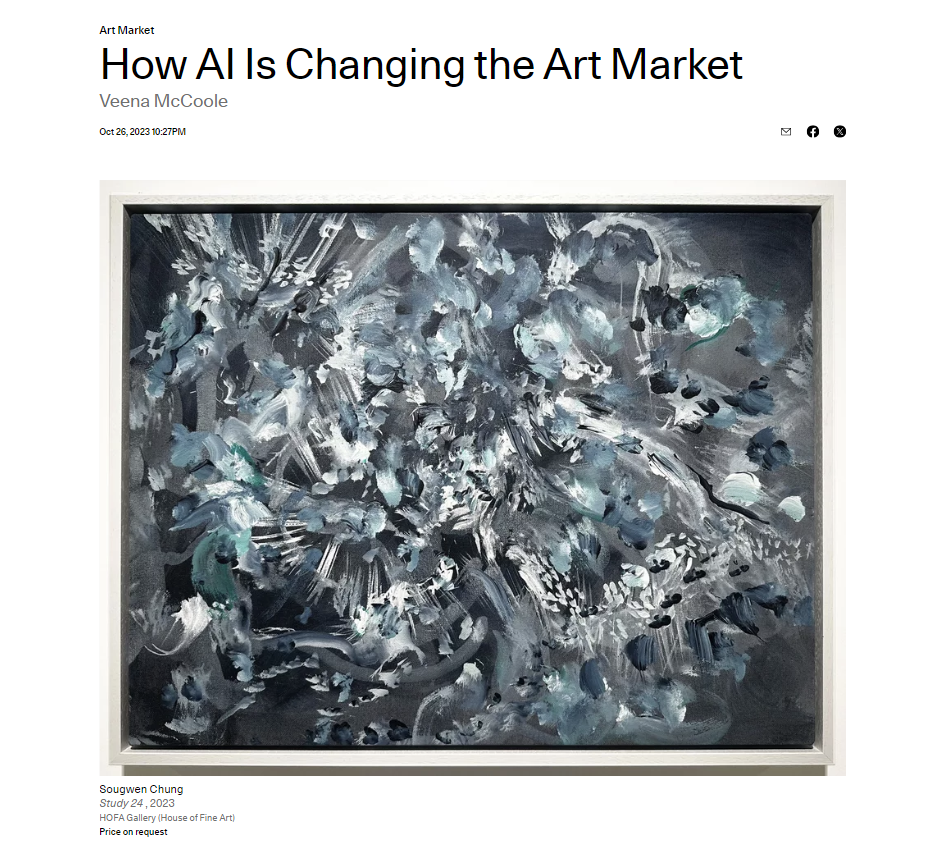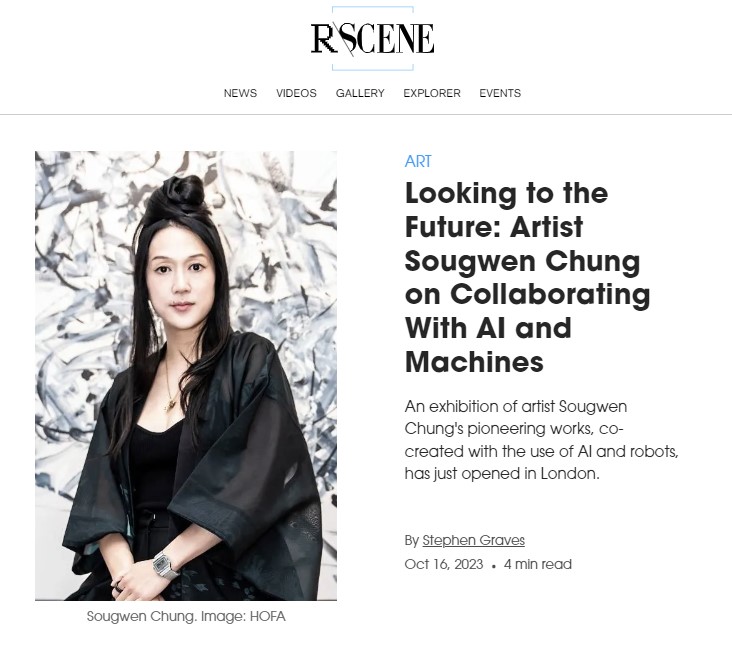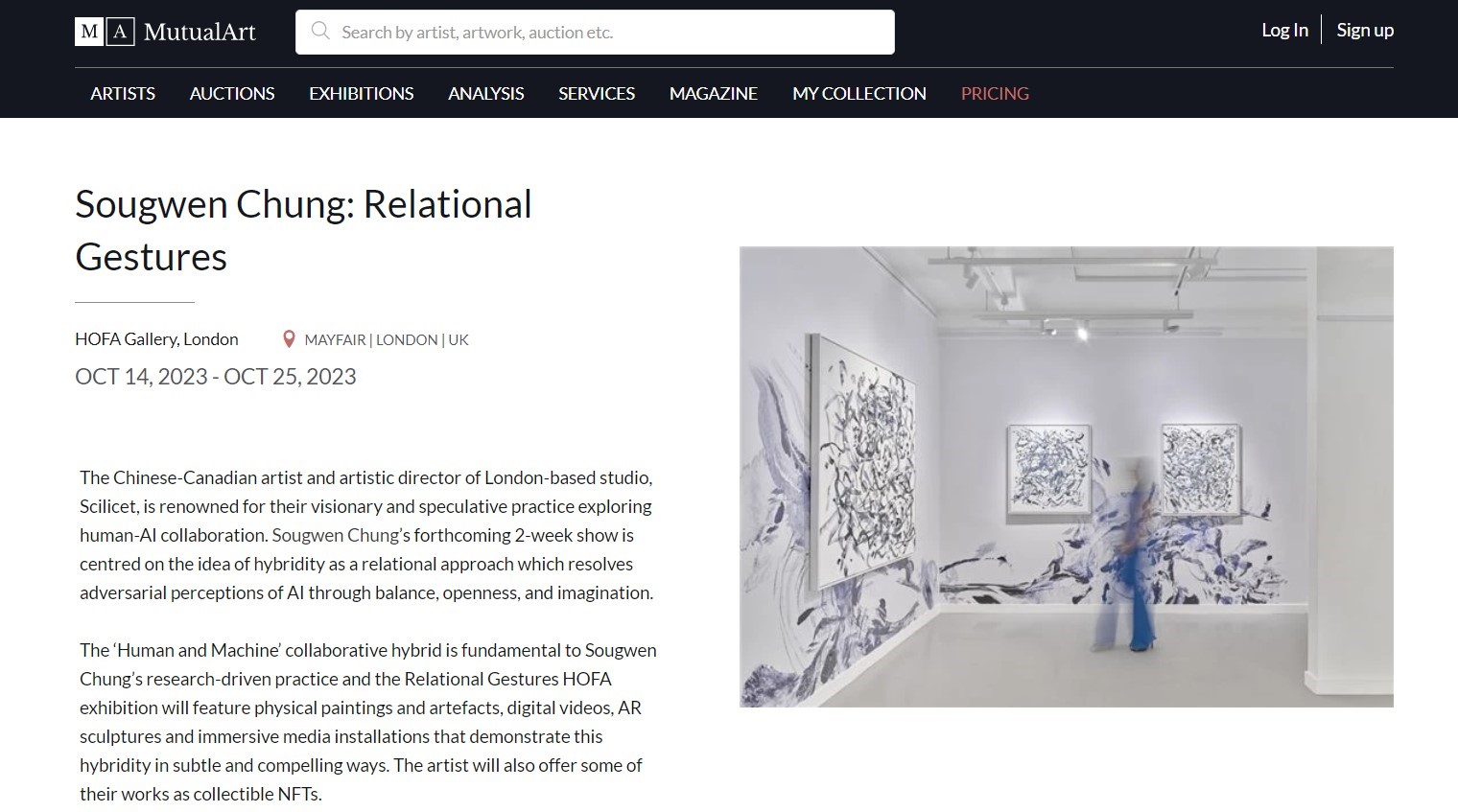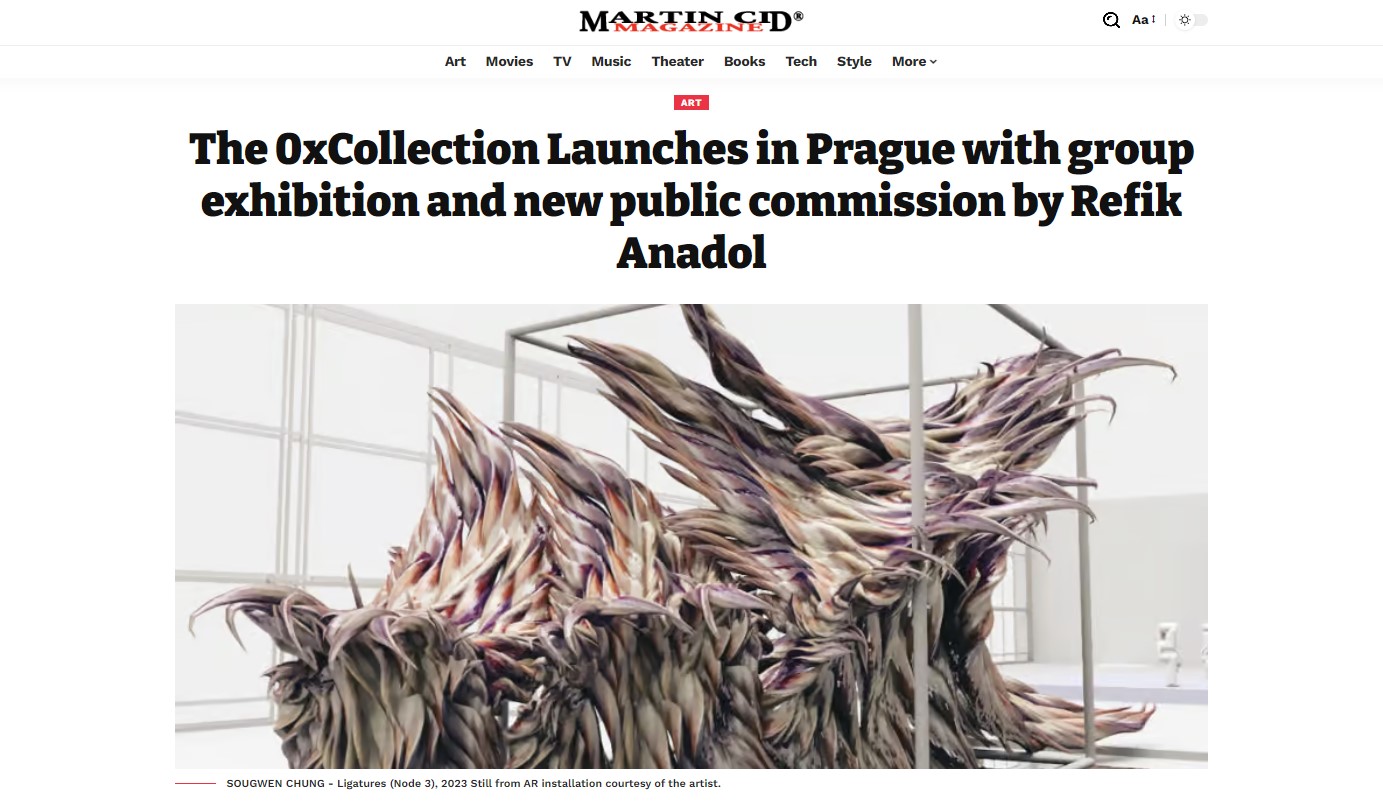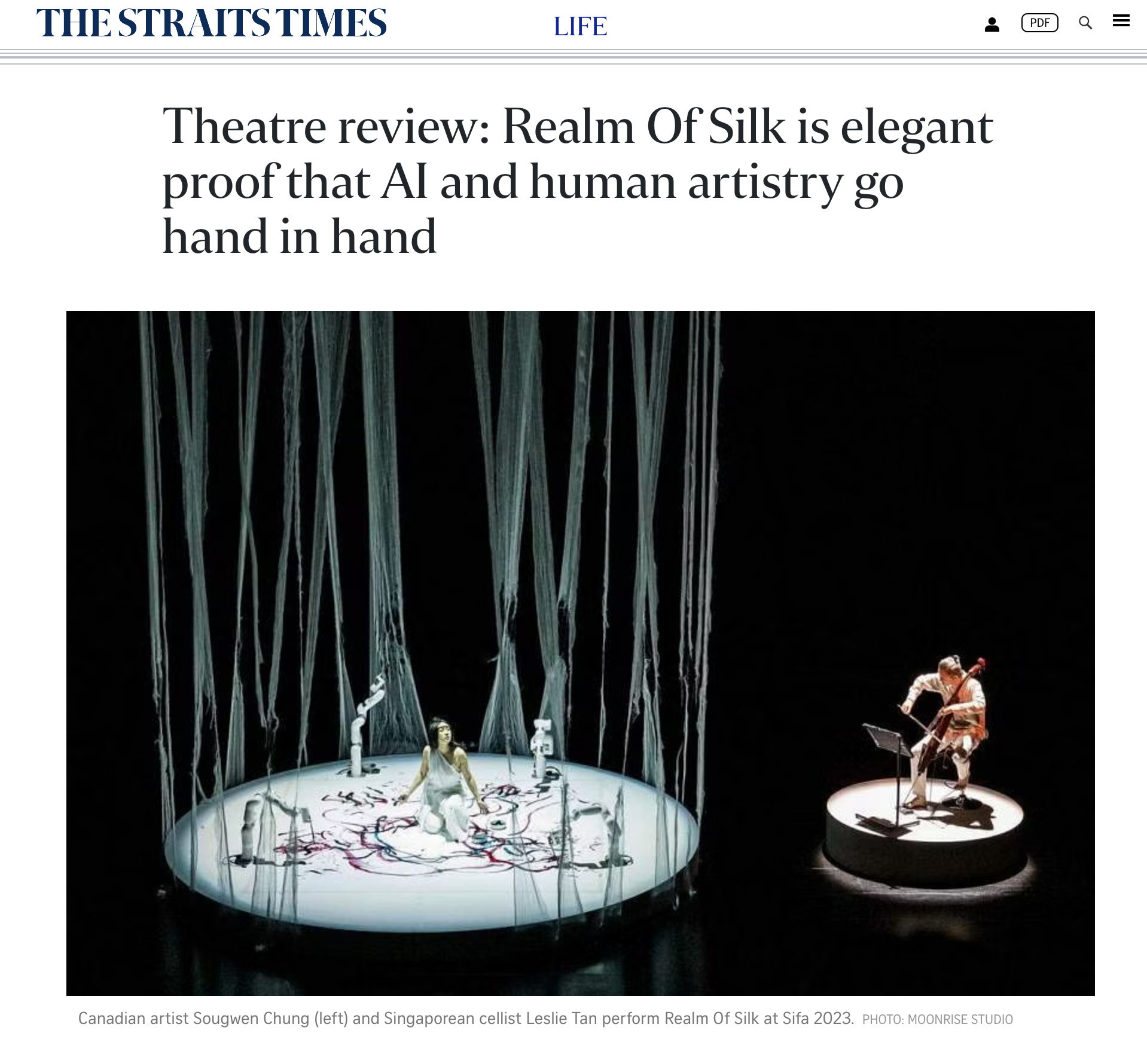Latest in: Feature
When artists work with technology, they fundamentally rewrite narratives of hype and mistrust, Chung told Observer. It’s not every day you witness robotic arms with brushes in hand, painting in harmonious tandem alongside a …
With his art-making software dating back to the 1960s, the programmer and artist paved the way for today’s confluence of art and technology Is artificial intelligence a tool to be used by humans to …
What role, if any, should artificial intelligence play in the world of art and content creation? Prestige asks AI-art experts Alex Israel and Sougwen Chung. As soon as artificial intelligence become easily accessible through the likes of …
Two leaders in the field of machine learning assess its progressive potential for art and beyond For over a decade, Mick Grierson has been leading research into creative applications of AI. As a co-founder …
Arun Kakar Mar 4, 2024 8:08PM Read the article here
Veena McCoole Sougwen Chung Study 24 , 2023HOFA Gallery (House of Fine Art) Price on request Since the COVID-19 lockdowns accelerated the art market’s transition to remote sales, collectors have warmed to tools like augmented …
Since 2015, artist Sougwen Chung has pioneered the use of AI and robotics in their work, producing a series of artworks built on the principle of “human-machine collaboration.” A new exhibition at London’s House …
HOFA Gallery, London MAYFAIR | LONDON | UK OCT 14, 2023 - OCT 25, 2023 The Chinese-Canadian artist and artistic director of London-based studio, Scilicet, is renowned for their visionary and speculative practice exploring …
DIGITAL ART, FROM THE PRESENT, FOR THE FUTURET he 0xCollection (pronounced “Hex Collection”), an initiative of new media and time-based art by contemporary artists at the forefront of innovation, premiers its international exhibition programme …
Singapore International Festival of Arts (Sifa)Realm Of SilkSougwen ChungVictoria TheatreSaturday (May 20) With artificial intelligence (AI) sending waves of upheavals in the art world, it is apt that this year’s Sifa – positioning itself …
